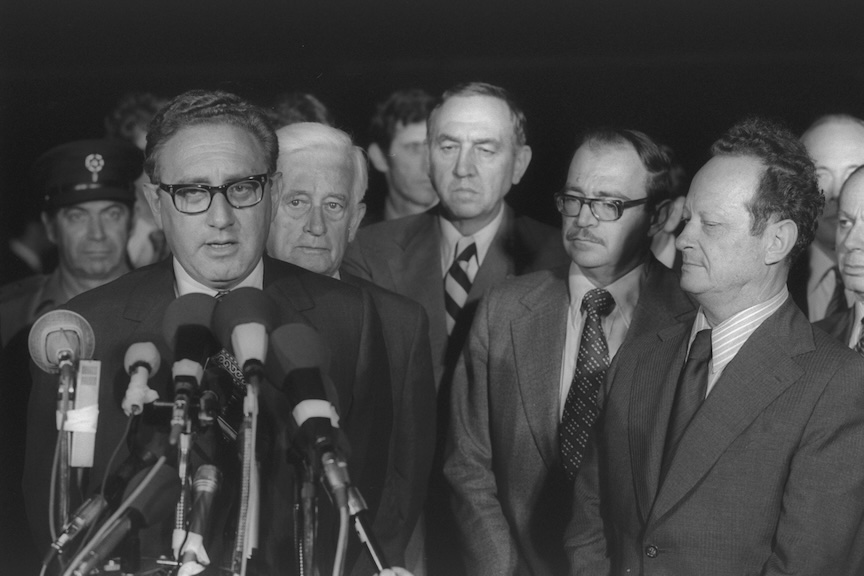1974- Syrian Prisoners

Kissenger with Simcha Dinitz and Yigal Allon
US Secretary of State Henry Kissinger built on his success between Egypt and Israel to begin negotiations with Syria
The Syrian Prisoner Dilemma
At the end of the Yom Kippur War, there were over 300 soldiers missing on the Syrian front. The Syrians refused to provide a list of the prisoners they held or allow Red Cross visits to them. Building on his success with Egypt, Secretary of State Kissinger once again began visiting the Middle East to negotiate a disengagement agreement between the sides. For Israel, the return of all the prisoners was its highest priority. After several unsuccessful attempts to get any information from the Syrians, Kissinger traveled to Damascus and convinced Syrian President Assad to provide him with a list of Israeli prisoners and allow Red Cross visits. In return, Kissinger pledged to convince the Israelis to withdraw to a line that would satisfy Assad and reach a disengagement agreement. On February 27th, Assad provided the prisoner list, which Kissinger headed to Israel to deliver.
Kissinger wrote the following passage in his book Years of Upheaval:
For Golda, the list of surviving Israeli prisoners was not a negotiating counter or a political coup: It was a record of the life or death of members of her family, names of young men that would bring joy to their loved ones, and despair by omission to others. Her bearing and a care-worn face showed the anticipation and then the relief that she felt; she forced herself to address the mundane technical requirement.
When Kissinger stated there were 65 names on the list, Golda inquired whether they were all alive. Kissinger assured Golda that the men were guaranteed to be alive, and that the Red Cross would be able to begin visiting them in two days. What was required of the Israelis was to transmit to Kissinger their ideas for disengagement.
The next day, after a full day of negotiations, when Kissinger was getting ready to leave, Golda said the following:
I think without words, the secretary realizes what he has done, whether it is meant for us to get this list. Maybe in some places, people don't get excited about 60 names 65 names, but you people understand, and to us, it means more than we can say, and we really don't want to say thank you because I know you did it because you understand what this is about, but I want you to know how our people feel. You will feel it, I am sure, in the streets and everywhere. This is a great thing that you have done.
Reaching an agreement on disengagement with the Syrians was not an easy matter, It took Kissinger 19 separate shuttles between Syria and Israel to accomplish the deal. During this time, a low-level War of Attrition was ongoing between Israeli and Syrian forces. Finally, on May 31, 1974, a disengagement agreement was signed. That agreement called for Israeli forces to withdraw slightly behind the Purple Line that had delineated the borders between Israel and Syria between the Six-Day War and the Yom Kippur War. Israel’s major concession was the return of the Syrian town of Quneitra. There was to be a buffer zone patrolled by the UN between Israeli and Syrian forces. Finally, there was an exchange of prisoners.
 >
>